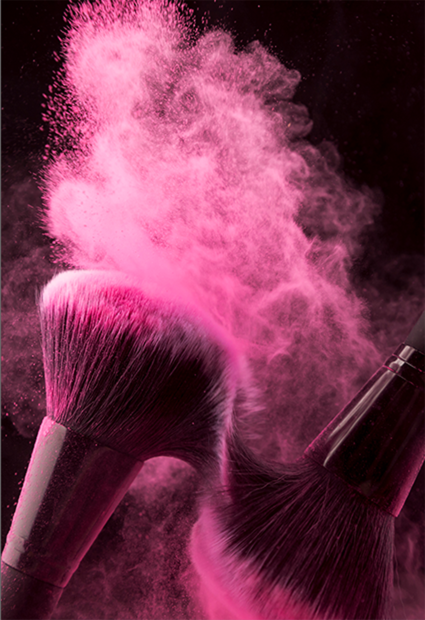

Once the raw mica reaches the factory floor, it undergoes several stages of refinement, each executed with surgical precision. The slicing of mica sheets is a critical process that demands both state-of-the-art machinery and the keen oversight of trained technicians. These technicians are not just operators but custodians of quality, ensuring that each sheet meets stringent industrial standards. Their competence establishes the factory’s reputation for excellence, as consistency in product quality is non-negotiable in competitive markets.


Versatility of Mica Mineral Powder
The future of mica mineral powder looks promising as its applications continue to expand across multiple industries. From construction and manufacturing to cosmetics and electronics, mica mineral powder remains a critical component due to its versatile properties and wide range of benefits. As innovation in these industries progresses, mica mineral powder is likely to play an increasingly important role in meeting the demands for performance, sustainability, and aesthetics.
Exploring Mica Percentages in Bulk Materials and Their Applications
A group of parallel cleavages can be seen in a photograph of biomica under orthogonal polarized (left) and single polarized (right) mirrors.
- Recently published
In 2022, Lingshou Huajing Mica Co., Ltd. launched cosmetic grade mica powder. The flake structure of mica powder can lock the water on the surface of the skin, forming a protective film to effectively prevent water loss. Its unique gloss and reflection effect add natural and charming luster to the skin, and mica powder also has a certain sunscreen effect. To a certain extent, it can reduce the damage of ultraviolet rays on the skin, protect the skin from the external environment, and prevent sunburn.

The growing trend of mica makeup reflects a broader movement towards natural and sustainable beauty. As consumers continue to seek out cleaner, greener products, the demand for mica-based cosmetics is likely to increase. Brands that embrace ethical sourcing and transparent practices will not only fulfill consumer desires but also play a vital role in promoting social responsibility within the industry.
Mica powder's popularity can be attributed to several factors. Firstly, its natural origins make it a desirable ingredient in an increasingly eco-conscious world. Secondly, its versatility allows for a wide range of applications, ensuring that it appeals to manufacturers in multiple sectors. Finally, mica powder’s safe, non-toxic nature makes it suitable for use on skin, in crafts, or even in food without adverse effects.
Mica pigments offer endless creative possibilities across various industries, from cosmetics to arts and crafts. Whether you're a business looking for mica pigments wholesale or an individual artist needing bulk mica pigment, understanding the different options available will help you make an informed choice.
The common characteristics of mica group minerals are: layered silicate minerals, monoclinic crystal system, a few trigonal crystal system, the crystals are pseudo-hexagonal columnar, plate and sheet; The aggregate is scaly and foliaceous. It has a set of extremely complete cleavage, along which it is easy to peel into sheets. Therefore, the shape of mica is usually regarded as sheet.
Understanding Cosmetic Pigment Powder
- Random reading
What are the uses of mica
- là mica tự nhiên hoặc tổng hợp
- A Guide of Mica Pigments
It is an indispensable and important raw material in the fields of electric heating equipment, wire and cable, aerospace and so on.
Featured products:

It is an indispensable and important raw material in the fields of electric heating equipment, wire and cable, aerospace and so on.
- The Beauty and Versatility of Mica Flakes
It is an indispensable and important raw material in the fields of electric heating equipment, wire and cable, aerospace and so on.

The viscosity of epoxy resin allows for intricate patterns and designs, and the addition of pearl pigments enhances these effects by reflecting light in fascinating ways. Artists can manipulate the pigments by layering, swirling, or even incorporating additives to achieve varying levels of transparency and shimmer. This level of control offers endless possibilities for creativity, making each piece a unique expression of the artist's vision.
Later, with the development of science and technology, people gradually realized that mica minerals have high insulation, high temperature resistance, strong acid and alkali resistance, and mica also began to enter building materials, fire, plastics, paper, rubber, pearlite pigments and other industries. These are mainly Muscovite and phlogopite.
- mica pigments for cosmetics
2. Cosmetics MICA is widely used as a cosmetic ingredient, providing luminosity and shimmer to various beauty products. Its appeal lies in its safe, non-toxic nature, making it favorable for consumers who prioritize safe products. The burgeoning cosmetics market in China, driven by growing consumer awareness and disposable income, bolsters the demand for MICA.
- Premium Synthetic Mica Cosmetics for Vibrant Makeup Looks
- Automotive Mica Powder_ Elevate Your Vehicle's Aesthetic Appeal
Customization: When working with suppliers for bulk mica pigments, you may be able to request customized colors, particle sizes, or effects that meet the specific needs of your project or product line.
- Search
- Links
- mica in lipstick
- matte mica powder
- muscovite phlogopite mica
- food safe pearlescent mica
- color shift mica powder
- phlogopite mica
- lip safe mica pigments
- natural mica for soap making
- types of mica rock
- mica powder airbrush
- mica powder for epoxy resin
- mica makeup
- wax melt mica powder
- mica in cosmetic products
- lip safe mica powder
- interior wall coating
- what is edible mica powder
- mica glitter flakes
- insulating paint for interior walls
- mica wholesale supplier
- painting wax melts with mica
- pearl pigment powder
- natural mica based pearl industrial pigments
- what is mica powder made from
- golden mica factory
- thermal insulation paint for interior walls
- what is pearl pigment
- fda approved mica powder
- golden mica price
- mica powder what is it
- mica powder use
- can you use mica powder in concrete
- white mica powder for resin
- mica powder glitter
- pearlescent pigment powder
- rock with mica flakes
- can mica powder be used in resin
- mica flakes for sale
- are mica powders safe
- mica powder in lip gloss
- synthetic mica vs natural mica
- white mica powder
- is mica powder safe on skin
- mica glitter for lip gloss
- what is mica powder used for in makeup
- what do you use mica powder for
- gold mica dust
- mica types
- mica design
- pearlescent powder
- pearl pigment mica powder
- gold mica powder for cosmetics
- what to do with mica powder
- muscovite and phlogopite mica
- cosmetic mica powder wholesale
- automotive pearl pigment powder
- mica powder foundation
- colored mica powder
- mica for cosmetics
- mica chips
- glitter mica powder
- heat reflective interior paint
- mica powder for wax melts
- chameleon mica flakes
- pearl resin pigment
- makeup mica powder
- what can i use mica powder for
- china synthetic mica powder
- pearl white mica powder
- coated mica powder
- is mica safe for skin
- color shift pearl pigment
- shimmer pigment powder
- mica pigment eyeshadow
- mica china
- glitter mica powder for lip gloss
- mica flakes wholesale
- coloring resin with mica
- mica exporter
- decorative mica sheets
- pearl pigment for auto paint
- mica synthetic
- mica powder makeup
- what is mica based pearlescent pigment
